Famous game devs before they were famous [ClassicRadar]
Just how did Kojima, Miyamoto, and Cliffy B get started?
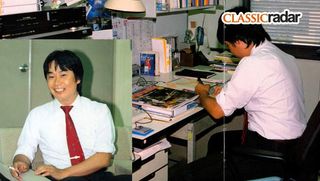
Almost famous
Everyone has to start out at the bottom of the food chain at work (see a young Shigeru Miyamoto above). That's why they call it the career ladder. You grab onto the bottom rung, and then spend years working your way up. And superstar game developers are no exception.
They might be household names now, and sell games in Hollywood-embarrassing numbers, but every big designer had to start off somewhere a lot less glamorous. So we've had a poke around and dug out the earliest games by the modern industry's brightest and best. What did David Jaffe do before God of War? You might be very surprised.
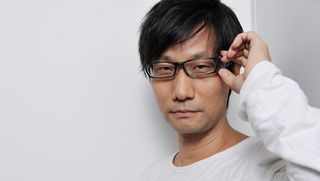
Hideo Kojima
But started out on: Penguin Adventure, a pseudo 3D, over-the-shoulder platformer of sorts, released on the MSX console in 1986. It was a good looking game for the hardware it was running on, and was also the origin of Pentarou, the flying, gun-toting penguin from Parodius.
Any early signs of future greatness? Penguin Adventure was technically impressive and added a lot more complexity over its predecessor, 1983's Antarctic Adventure. There were now boss fights, RPG elements, and NPCs to trade and interact with, as well as a lot of player freedom. So in a way, it was quite proto-Koj, yes.

Peter Molyneux
But started out on: A homemade, text-based business simulation game called The Entrepreneur. He published it himself by making hundreds of copies manually on a tape recorder, and sold it via a magazine advert.
Any early signs of future greatness? Any early signs of future greatness? The game sold two copies. Though being a Molyneux game, the simulation was pretty deep, and apparently pretty similar to what eventually turned up in Fable II's economy system. No word on the presence of any acorns though.

Cliff Bleszinski
But started out on: A couple of early point and click adventure games called Palace of Deceit and Dare to Dream. DtD in particular is noteworthy for its batshit plot regarding a disturbed 10 year-old boy exploring his troubled dreamscape in the form of a city. And fairly crazy/awful writing.
Any early signs of future greatness? Although radically different from the games Cliff became famous for, the intro for Dare to Dream does contain the immortal line 'Blood, oh so much redness. Chains, skeletons, pain! Help me!'. So the clues were sort of there from the start.

David Jaffe
But started out on: Mickey Mania, a rather excellent Mickey Mouse-licensed platformer on the SNES and Mega Drive. It followed Mickey through his whole career to date at the time, starting with a black and white level based upon his animated short debut in Steamboat Willie.
Any early signs of future greatness? There were some cool environmental set-pieces, but obviously nothing on the scale of God of War. But the bit where Mickey uses a bird as a stepping stone in the first level was obviously the inspiration for the GoW's Harpies, and there's a strong rumour that the game originally ended with Mickey tearing Goofy in half and shitting in his ribcage.
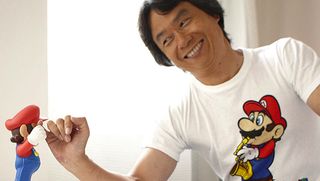
Shigeru Miyamoto
But started out on: Not Donkey Kong. No, although it's the most famous of his early games, the carpenter/monkey love triangle only came about as a follow-up to the previous game Miyamoto worked on. That was a Galaga-style arcade shooter called Radar Scope.
Any early signs of future greatness? Not in Radar Scope itself, but definitely in what it led to. After the game tanked in the US, Nintendo ordered Miyamoto to rework it in order to save the 3000 unit investment it had made in the arcade cabinets. Instead of tweaking it, he designed a whole new game. That game was called Donkey Kong. It did quite well.
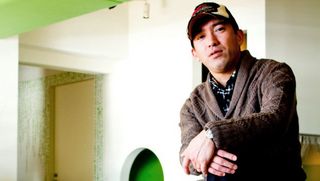
Shinji Mikami
But started out on: Capcom's early '90s Game Boy games. His first was Capcom Quiz: Hatena hatena no Daibken, one of the big C's many quiz board games, and after that, he worked on the Who Framed Roger Rabbit adaptation. A license still in search of correct grammar, 22 years later.
Any early signs of future greatness? Not particularly. Though the potential for massive comedic injury within the Roger Rabbit license perhaps had an influence on Resident Evil 4 later down the line.
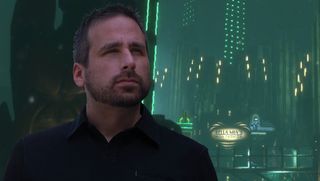
Ken Levine
But started out on: Technically, Front Page Sports: Baseball Pro '98, part of Sierra's mid-'90s sports series. Although he's only credited as a Photographer, and we're not exactly sure what that entails on a baseball video game. More relevent is Levine's next game work providing design and story concepts for pioneering first-person stealth game Thief in 1998.
Any early signs of future greatness? In Thief's brand new, more cerebral approach to FPS, yes, we can see the creator of BioShock evolving as fast as the clones at the end of Judge Dredd. As for Baseball Pro, well, you can take photos of things in BioShock. The experience was a clear influence.
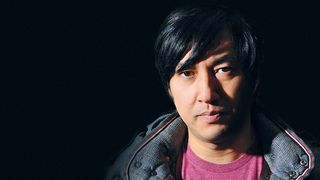
Suda 51
But started out on: Super Fire Pro Wrestling 3: Final Bout, at Human Entertainment. As a lifelong pro wrestling geek, working on an addition to Human's under-rated but very deep grappling series was as good a fit as putting a pig in poop. A pig in a luchador mask and spandex. This metaphor is getting disturbing now.
Any early signs of future greatness? Suda's 1994 sequel to SFPW3 featured a protagonist who witnessed the murder of his trainer immediately before his championship bout. Upon winning, he realised that having no-one to share it with, his victory meant nothing. He killed himself in the game's ending. Thus ladies and gentlemen, Suda 51 had arrived.
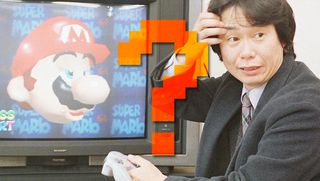
First job blues
Not bad for their first times, huh? Are there any other creators out there that whose first game you'd like to see? Let us know in the comments!

In honor of the holiday season, we're sharing some of our favorite stories from GamesRadar's past over the seasonal break. Enjoy it!

Everyone has to start out at the bottom of the food chain at work. That's why they call it the career ladder. You grab onto the bottom rung, and then spend years working your way up. And superstar game developers are no exception.
They might be household names now, and sell games in Hollywood-embarrassing numbers, but every big designer had to start off somewhere a lot less glamourous. So we've had a poke around and dug out the earliest games by the modern industry's brightest and best. What did David Jaffe do before God of War? You might be very surprised.
Hideo Kojima
Famous for: The Metal Gear series
But started out on: Penguin Adventure, a pseudo 3D, over-the-shoulder platformer of sorts, released on the MSX console in 1986. It was a good looking game for the hardware it was running on, and was also the origin of Pentarou, the flying, gun-toting penguin from Parodius.
Any early signs of future greatness? Penguin Adventure was technically impressive and added a lot more complexity over its predecessor, 1983's Antarctic Adventure. There were now boss fights, RPG elements, and NPCs to trade and interact with, as well as a lot of player freedom. So in a way, it was quite proto-Koj, yes.
Peter Molyneux
Famous for: The Fable series, the Black and White series, Populous, Theme Park
But started out on: A homemade, text-based business simulation game called The Entrepreneur. He published it himself by making hundreds of copies manually on a tape recorder, and sold it via a magazine advert.
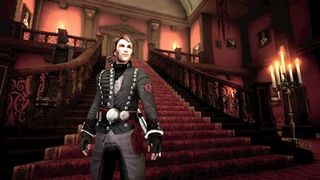
Above: No screens from The Entrepreneur, alas, so here's a nice pic from Fable III. Because being king of Albion is the ultimate entrepreneurship
Any early signs of future greatness? The game sold two copies. Though being a Molyneux game, the simulation was pretty deep, and apparently pretty similar to what eventually turned up in Fable II's economy system. No word on the presence of any acorns though.
Cliff Bleszinski
Famous for: The Gears of War series
But started out on: A couple of early point and click adventure games called Palace of Deceit and Dare to Dream. DtD in particular is noteworthy for its batshit plot regarding a disturbed 10 year-old boy exploring his troubled dreamscape in the form of a city. And fairly crazy/awfulwriting.
Above: Dare to Dream - A dramatic reading
Any early signs of future greatness? Although radically different from the games Cliff became famous for, the intro for Dare to Dream does contain the immortal line 'Blood, oh so much redness. Chains, skeletons, pain! Help me!'. So the clues were sort of there from the start.
David Jaffe
Famous for: God of War, Twisted Metal
But started out on: Mickey Mania, a rather excellent Mickey Mouse-licensed platformer on the SNES and Mega Drive. It followed Mickey through his whole career to date at the time, starting with a black and white level based upon his animated short debut in Steamboat Willie.
Any early signs of future greatness? There were some cool environmental set-pieces, but obviously nothing on the scale of God of War. But the bit where Mickey uses a bird as a stepping stone in the first level was obviously the inspiration for the GoW's Harpies, and there's a strong rumour that the game originally ended with Mickey tearing Goofy in half and shitting in his ribcage.
They might be household names now, and sell games in Hollywood-embarrassing numbers, but every big designer had to start off somewhere a lot less glamourous. So we've had a poke around and dug out the earliest games by the modern industry's brightest and best. What did David Jaffe do before God of War? You might be very surprised.
Hideo Kojima
Famous for: The Metal Gear series
But started out on: Penguin Adventure, a pseudo 3D, over-the-shoulder platformer of sorts, released on the MSX console in 1986. It was a good looking game for the hardware it was running on, and was also the origin of Pentarou, the flying, gun-toting penguin from Parodius.
Any early signs of future greatness? Penguin Adventure was technically impressive and added a lot more complexity over its predecessor, 1983's Antarctic Adventure. There were now boss fights, RPG elements, and NPCs to trade and interact with, as well as a lot of player freedom. So in a way, it was quite proto-Koj, yes.
Peter Molyneux
Famous for: The Fable series, the Black and White series, Populous, Theme Park
But started out on: A homemade, text-based business simulation game called The Entrepreneur. He published it himself by making hundreds of copies manually on a tape recorder, and sold it via a magazine advert.

Above: No screens from The Entrepreneur, alas, so here's a nice pic from Fable III. Because being king of Albion is the ultimate entrepreneurship
Any early signs of future greatness? The game sold two copies. Though being a Molyneux game, the simulation was pretty deep, and apparently pretty similar to what eventually turned up in Fable II's economy system. No word on the presence of any acorns though.
Cliff Bleszinski
Famous for: The Gears of War series
But started out on: A couple of early point and click adventure games called Palace of Deceit and Dare to Dream. DtD in particular is noteworthy for its batshit plot regarding a disturbed 10 year-old boy exploring his troubled dreamscape in the form of a city. And fairly crazy/awfulwriting.
Above: Dare to Dream - A dramatic reading
Any early signs of future greatness? Although radically different from the games Cliff became famous for, the intro for Dare to Dream does contain the immortal line 'Blood, oh so much redness. Chains, skeletons, pain! Help me!'. So the clues were sort of there from the start.
David Jaffe
Famous for: God of War, Twisted Metal
But started out on: Mickey Mania, a rather excellent Mickey Mouse-licensed platformer on the SNES and Mega Drive. It followed Mickey through his whole career to date at the time, starting with a black and white level based upon his animated short debut in Steamboat Willie.
Any early signs of future greatness? There were some cool environmental set-pieces, but obviously nothing on the scale of God of War. But the bit where Mickey uses a bird as a stepping stone in the first level was obviously the inspiration for the GoW's Harpies, and there's a strong rumour that the game originally ended with Mickey tearing Goofy in half and shitting in his ribcage.
Shigeru Miyamoto
Famous for: The Super Mario series, the Legend of Zelda series
But started out on: Not Donkey Kong. No, although it's the most famous of his early games, the carpenter/monkey love triangle only came about as a follow-up to the previous game Miyamoto worked on. That was a Galaga-style arcade shooter called Radar Scope.
Any early signs of future greatness? Not in Radar Scope itself, but definitely in what it led to. After the game tanked in the US, Nintendo ordered Miyamoto to rework it in order to save the 3000 unit investment it had made in the arcade cabinets. Instead of tweaking it, he designed a whole new game. That game was called Donkey Kong. It did quite well.
Shinji Mikami
Famous for: The Resident Evil series, Viewtiful Joe, Killer7, God Hand
But started out on: Capcom's early '90s Game Boy games. His first was Capcom Quiz: Hatena hatena no Daib%26ocirc;ken, one of the big C's many quiz board games, and after that, he worked on the Who Framed Roger Rabbit adaptation. A license still in search of correct grammar, 22 years later.
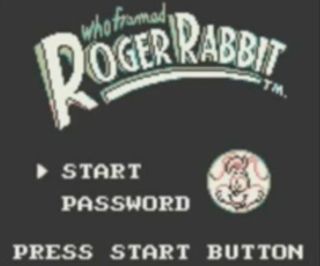
Any early signs of future greatness? Not particularly. Though the potential for massive comedic injury within the Roger Rabbit license perhaps had an influence on Resident Evil 4 later down the line.
Ken Levine
Famous for: BioShock, System Shock 2
But started out on: Technically, Front Page Sports: Baseball Pro '98, part of Sierra's mid-'90s sports series. Although he's only credited as a Photographer, and we're not exactly sure what that entails on a baseball video game. More relevent is Levine's next game work providing design and story concepts for pioneering first-person stealth game Thief in 1998.
Any early signs of future greatness? In Thief's brand new, more cerebral approach to FPS, yes, we can see the creator of BioShock evolvingas fast asthe clones at the end of Judge Dredd. As for Baseball Pro, well, you can take photos of things in BioShock. The experience was a clear influence.
Suda 51
Famous for: No More Heroes, Killer7
But started out on: Super Fire Pro Wrestling 3: Final Bout, at Human Entertainment. As a lifelong pro wrestling geek, working on an addition to Human's under-rated but very deep grappling series was as good a fit as putting a pig in poop. A pig in a luchador mask and spandex. This metaphor is getting disurbing now.
Any early signs of future greatness? Suda's 1994 sequel to SFPW3 featured a protagonist who witnessed the murder of his trainer immediately before his championship bout. Upon winning, he realised that having no-one to share it with, his victory meant nothing. He killed himself in the game's ending. Thus ladies and gentlemen, Suda 51 had arrived.












